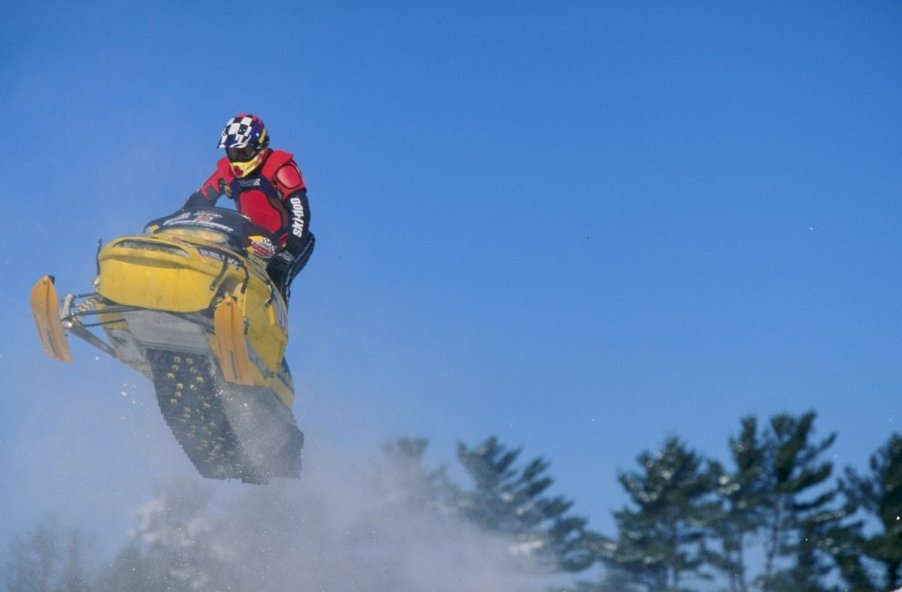
Do You Have to Get Snowmobile Insurance?
Winter is upon us, and with it come winter activities and sports. Perhaps you’re thinking about stepping it up a bit this year, with a few more ski trips planned or more professional snowboarding lessons to complement what you’ve taught yourself. Or maybe you’re looking at snowmobiling and have been thinking about purchasing a snowmobile yourself. But you haven’t wrapped your head around the details yet and have a few questions, like whether you have to get snowmobile insurance.
Insuring your snowmobile

Though it’s generally a good idea to get any vehicle insured, snowmobile insurance is not required in most states.
According to ATV Helper, if you live in New York, North Dakota, Pennsylvania, South Dakota, or Vermont, you must carry a policy. If you operate a snowmobile off your personal property in Illinois, you also must be insured.
But most other states with roadways and parks conducive to snowmobiling require you to register your vehicle with the state DMV before operating it. Check with your local DMV to determine what operating requirements and restrictions may apply in your neck of the woods.
The states that require snowmobiles to be insured require owners to carry specific minimum liability insurance coverage. However, these minimums don’t necessarily cover all costs an owner may face in the event of an accident. Most insurers also offer more coverage options, such as comprehensive and collision policies. Whereas your basic liability insurance might cost you as little as $15 to $30 a month, supplemental coverage might raise your costs to a hundred or a couple hundred a month.
However, skimping on optional coverage could cost you big time if you’re in an accident by yourself. Imagine if you have a passenger on board or run into somebody. If you’re an experienced snowmobiler and using the vehicle only in a limited fashion in remote areas, scrimping on coverage might present less of a risk. Otherwise, you should seriously consider policies to supplement your liability coverage.
What does snowmobile insurance cover?
According to Allstate, a typical snowmobile liability insurance policy covers two things: bodily injury and property damage. A successful claim will help you cover the medical bills of an injured party and property damage you might have caused. States typically require a minimum amount of liability coverage before legally operating your vehicle.
However, your insurer might also offer collision coverage, which can help you cover the damage done to your snowmobile if you collide with something. Snowmobiles are not cheap, and repairing a damaged one can be expensive. Collision coverage is good to have if you hit a fence, branch, or another snowmobile.
You also may be offered comprehensive coverage. Comprehensive coverage helps protect you if your vehicle is damaged but not by a collision. For example, your snowmobile could be damaged by a strong winter storm, or it could be vandalized. Comprehensive policies cover you in these instances and if your snowmobile is stolen.
How to avoid filing a claim
Though insurance is great to have, ideally, you’ll never have to use it. Even if your insurance company handles claims quickly, who wants to miss snowmobiling time while the vehicle is undergoing repairs? Markel Insurance notes that the best way to avoid filing a claim is by following a few simple safety tips that can keep your snowmobile in good shape and you and your passengers safe.
Before snowmobiling, always check the weather and conditions of the trail to ensure it’s safe to ride. And always inspect your snowmobile before starting it. Examine the oil and fuel levels and major components such as the brakes, skis, drive belt, battery, light, handlebars, and throttle. Keep your owner’s manual with you to troubleshoot any problems you might encounter on your ride too. And make sure you don’t overload your snowmobile. Check your owner’s manual for your vehicle’s maximum carrying capacity, and do not exceed it.
No matter what happens, stay alert when operating your snowmobile. Don’t let yourself get so distracted by the sights or a conversation with a buddy that you stop paying attention to what you’re doing. Don’t speed, and don’t drink. Avoid snowmobiling over frozen bodies of water because you never know how thick the ice is from just eyeballing it. And finally, if you’re new to snowmobiling, take a safety course. In some states, a course certificate or even a license is required to operate a snowmobile. But in all cases, new drivers can learn and practice fundamental safety measures to help them avoid accidents and injuries.


